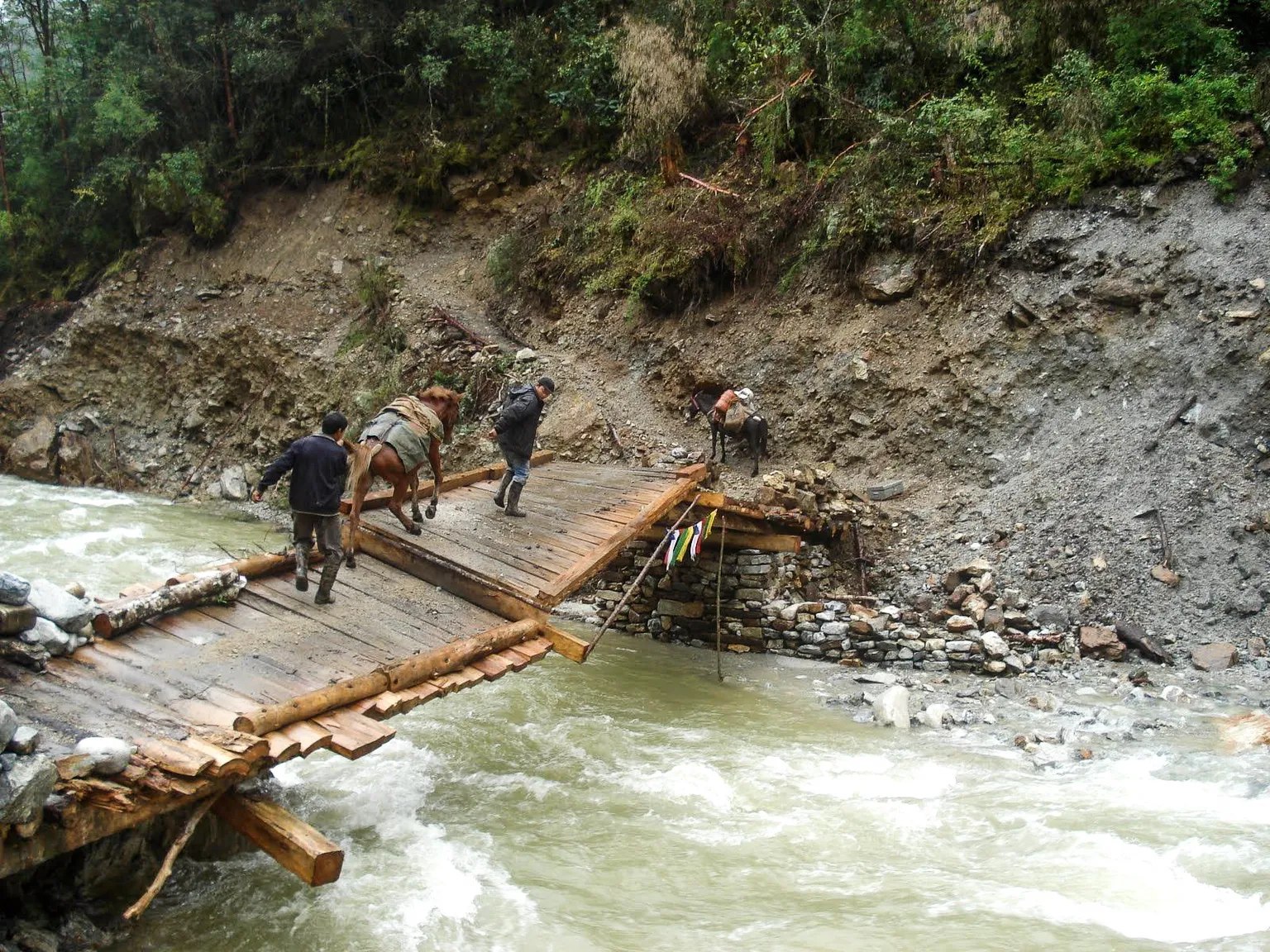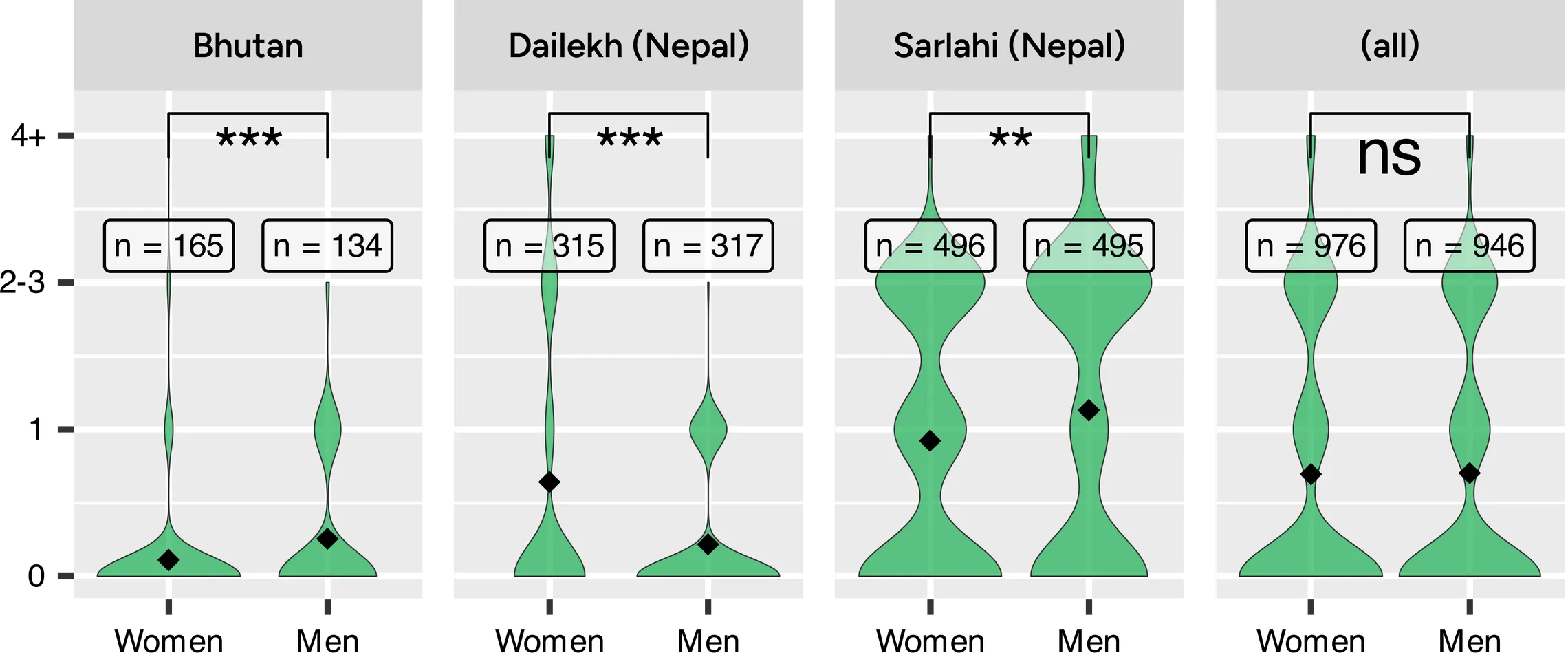When is a flood a flood?
Gendered perceptions of climate events and preparedness: Evidence from Bhutan and Nepal – A guest blog by UTS-ISF’s Jess MacArthur and Juliet Willetts

Evidence is increasing on the diverse impacts of climate events on people and their lives. Notably, different groups of people experience and describe impacts differently. Recent research also highlights that there may be different definitions of what constitutes a climate event or disaster – even among household members.
Understanding these diverse and subjective perceptions may be an important precursor for governments and development partners aiming to strengthen people’s resilience to climate change. So, when is a flood actually a flood?
The research
In 2022, SNV teams in Bhutan and two climatically distinct locations in Nepal (Sarlahi and Dailekh districts), [1] together with the University of Technology Sydney's Institute for Sustainable Futures (UTS-ISF) piloted a climate module to add to the Water, Sanitation and Hygiene – Gender Equality Measure (WASH-GEM). The climate module aimed to examine the gendered experience of climate-related events.
Across the three locations, the teams interviewed over 2,000 respondents. Wherever possible, enumerators separately interviewed two adult members of the same household of different genders (often, but always husband and wife).
What is WASH-GEM?
The WASH-GEM is a quantitative measurement tool that explores the diverse experiences of gender equality by both women and men. The WASH-GEM quantifies gendered experiences and changes across five conceptual domains through structured interviews.
Across the five domains, the WASH-GEM has 16 themes, which are reported on scales of zero-to-one. Four themes are WASH-related, and 12 focus on gender equality in society more broadly.
Ultimately, the WASH-GEM seeks to explore how changes in WASH can lead to changes in gender equality in society more broadly – aiding in the monitoring and evaluation of gender-transformative WASH programmes, projects, and policies.

Not a flood for all household members
‘In the last two years, how often have you experienced a {}?’ This question was one of the key framing questions for the perceived frequency of floods, severe storms, landslides, and drought. It was expected that husband-wife pairs would have similar responses. After all – a flood is when it floods, right?
Interestingly and unexpectedly, the results indicated statistically significant differences between the responses of women and men related to severe storms, landslides, and droughts across all three zones (Bhutan, Sarlahi, and Dailekh). The situation was even more complex for floods, as seen in Figure 1. While men perceived more flood events than women in Bhutan and Sarlahi (p< 0.01), women perceived more floods than men in Dailekh (p< 0.001). [2]

Figure 1: A comparison of gendered perspectives on flood prevalence in parts of Bhutan and Nepal
In Bhutan, women perceived (p< 0.001) more floods, but men perceived (p< 0.001) more drought and severe storms. Landslides were not explored in Bhutan.
In Dailekh, women perceived (p< 0.001) more floods, landslides, and droughts, but men perceived (p< 0.001) more severe storms.
In Sarlahi, men perceived (p< 0.001) more climate events than women for floods, landslides, and severe storms.
The data suggest that a flood may not always be described as a flood, with the same trend holding for landslides, droughts, and severe storms. These differences could be due to the different roles and responsibilities that men and women hold in these societies. For example, across all three regions, as men are responsible for constructing and maintaining the family’s physical home structure – they may be more attuned to severe storms which require home repairs. However, more research is required to dig into these results to understand the reasons for these differences.
While the frequency and severity of climate events can also be objectively assessed using secondary climate sources, human perceptions represent an important dimension of climate resilience.
What about gendered differences in preparedness and recovery?
While the above analysis focused on the frequency of climate events, gendered differences related to preparedness, recovery, seriousness and early warning were also explored. We brought these dimensions into a measure of individual hazard-specific resilience for floods, droughts, landslides, and severe storms. Across these aspects, there are gender, demographic, and geographic differences.
As such, indicators of resilience at the village or household level may overlook important individual and gender differences. Women and men may have different views on what constitutes a flood and may not share the same perceptions of climate preparedness and resilience.
Understanding these differences is key to supporting women and men in meaningful ways to build adaptive capacity to climate change. [3]
Notes
[1] The research study with SNV also covered the Savannakhet Province in Lao PDR. However, since the sample size was significantly smaller, this blog does not include data and analysis from Lao PDR.
[2] Reading Violin Plots: These violin plots indicate the perceived prevalence or frequency of selected climatic events. The plots also indicate the statistical significance for pair-wise t-tests between women’s and men’s responses (p-values ***=0.001, **=0.01, *=0.05), and the diamond shape indicates the mean value.
[3] Visit the WASH-GEM training website for more information.
Project context
As part of the Australian Government’s Water for Women Fund, SNV collaborated with the governments of Nepal, Bhutan and Lao PDR and the University of Technology Sydney’s Institute for Sustainable Futures (UTS-ISF) to strengthen water, sanitation and hygiene (WASH) systems. The partnership sought equitable and universal access to safely-managed sanitation and hygiene in seven districts in Bhutan and Lao PDR and to sustain rural water supply services in a further two districts in Nepal, setting in place the mechanisms needed to look ‘Beyond the Finish Line.’
Webinar announcement
Join us on Tuesday, 28 January, for a 1.5-hour webinar presentation and Q&A on the WASH-GEM tool application on SNV's Beyond the Finish Line programmes in Bhutan, Lao PDR, and Nepal. WASH-GEM is a measure developed by UTS-ISF that examines gender equality changes amongst women and men in relation to water. It was more recently expanded to incorporate a focus on climate resilience.
This webinar is organised by the Australian Government's Water for Women Fund, UTS-ISF, and SNV.